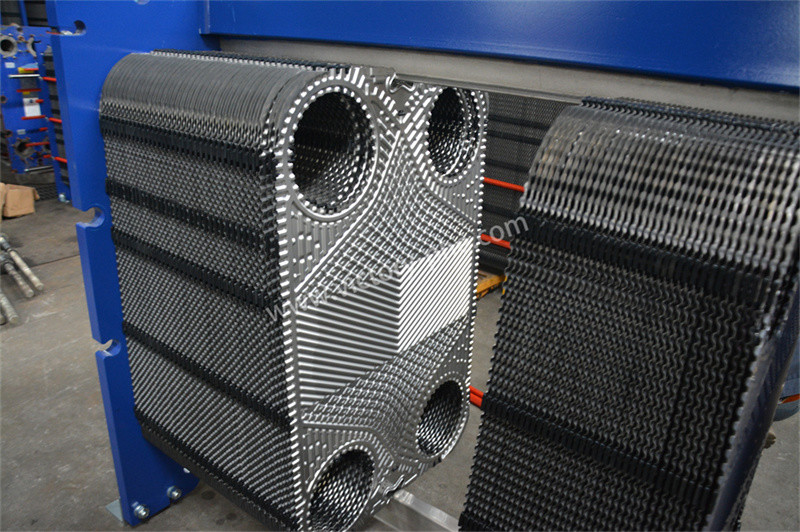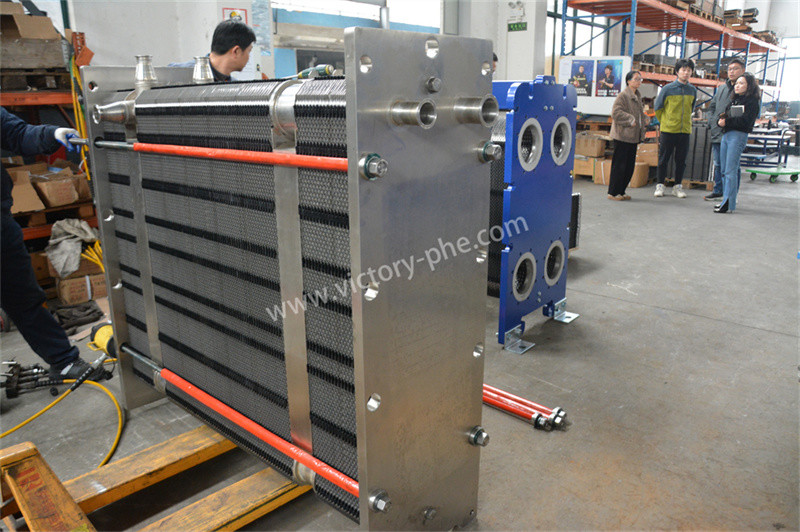Changzhou Victory Technology Co., LTD |
|
Verified Suppliers
|
|
Product Description
Water Oil heat Exchange Sondex Heat Exchanger Plates S100 S121 S4A Types
Sondex Heat Exchanger Plates
Sondex heat exchanger plates work based on the principles of heat transfer through the interaction of two separate fluid streams. The design of Sondex heat exchanger plates allows for efficient heat exchange between the fluids while keeping them physically separated. Here's an overview of how Sondex heat exchanger plates work:
Fluid Flow: The two fluids involved in the heat exchange process flow through separate channels within the plate heat exchanger. One fluid flows through the channels on one side of the heat exchanger plates, while the other fluid flows through the channels on the opposite side.
Heat Transfer: As the fluids flow in their respective channels, heat is transferred from one fluid to the other through the thin metal plates that separate them. The large surface area of the plates facilitates efficient heat transfer between the fluids.
Counterflow Principle: Sondex heat exchanger plates are designed to operate on the principle of counterflow, where the two fluid streams flow in opposite directions. This design maximizes the temperature difference between the two fluids, leading to efficient heat transfer.
Turbulent Flow: The flow paths within the heat exchanger plates are engineered to induce turbulence in the fluid streams. Turbulent flow enhances heat transfer by preventing the formation of boundary layers and promoting mixing between the fluids.
Thermal Efficiency: Sondex heat exchanger plates are designed to optimize thermal efficiency by minimizing pressure drop and maximizing the heat transfer coefficient, resulting in effective heat exchange between the fluids.
Overall, Sondex heat exchanger plates work by providing a reliable and efficient means of transferring heat between two fluid streams, making them suitable for a wide range of industrial, commercial, and residential heating and cooling applications.
| Brand | Model |
Sondex | S1,S4,S4A,S7A,S8,S8A,S9A,S14,S14A,S17,S19A,S20A,S21A S22A,S31A,S22,SW26,S37,SW40A,S41,S41A,S42,S42A,S62,S43 S47,SN51,S52,S64,S65,S81,S100,S121,SF123,SF160 |
| Material | Specification |
| Stainless Steel | SUS304 316 316L 310S 904 |
| Titanium and titanium-palladium alloy | TAi TAi-Pd |
| Hastelloy | C276 D205 B2G |
| Nickel | Ni200 Ni201 |
| Molybdenum | 254 |
Heat Exchanger Plate Material Choose:
Applacations
| Plate material | Suitable for fluids |
| Stainless steel (SUS304.316, etc.) | Purified water, river water, edible oil, mineral oil |
| Titanium and titanium palladium (Ti, Ti-Pd) | Sea water, salt water, salt compounds |
| 20Cr,18Ni,6Mo(254SMO) | Dilute sulfuric acid, dilute salt aqueous solution, inorganic aqueous solution |
| Nickel (Ni) | High temperature, high concentration caustic soda |
| HASTELLOY alloy (C276, D205, B2G) | Concentrated sulfuric acid, hydrochloric acid, phosphoric acid |

